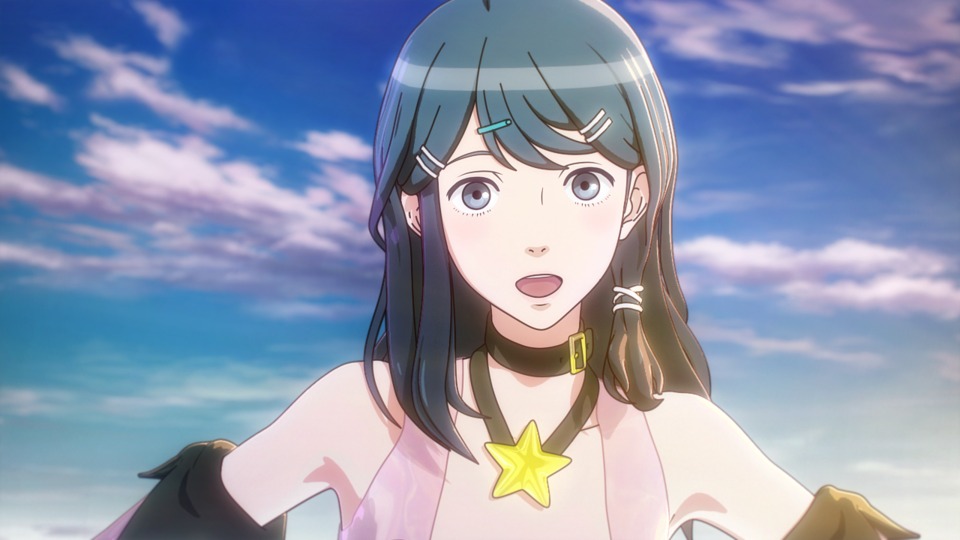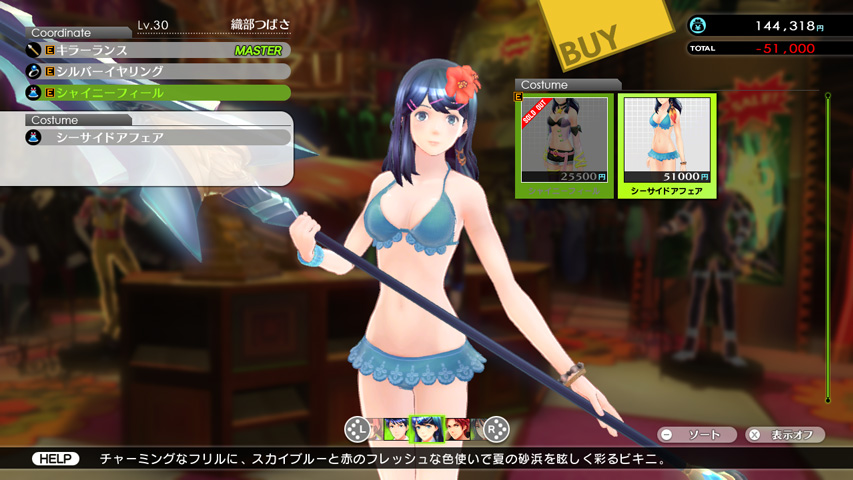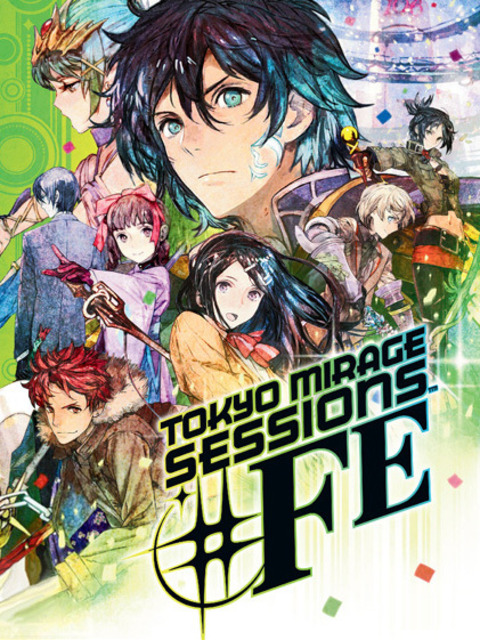Light hearted, saccharine and colorful JRPG
Tokyo Mirage Sessions #FE Encore or TMS for short, is a goofy, fun and lighthearted JRPG. The game is a collaboration between ATLUS and Nintendo and was planned to be a merger of the Shin Megami Tensei and Fire Emblem franchises. Unfortunately fans of either series will be disappointed to learn that neither franchise is properly represented in TMS. The game is best described as a Persona game with heavy J-Pop themes. The Fire Emblem elements that are there are barely noticeable such as: sound effects, names and the weapon-triangle. TMS, despite being barely recognizable from its original vision, is still worth a try if you can tolerate the paper-thin story, the inconsistent censorship and the outdated game design.

TMS is a JRPG set in modern Japan and revolves around the entertainment industry. A mysterious force is kidnapping and draining the life-force from people at concerts and event halls. You play as Itsuki Aoi, a typical high school student and a childhood friend of Tsubasa Oribe who dreams of becoming a pop idol. Itsuki by pure coincidence visits a talent show competition and learns that Tsubasa is one of the contestants. Problems immediately arise, once the MC of the show gets possessed and kidnaps all of the contestants including Tsubasa into an alternate world. After some story beats, Itsuki and Tsubasa join an entertainment label called Fortuna Entertainment, that moonlights as an organization that investigates these mysterious occurrences.
The game’s initial premise is interesting but fails to deliver at the end. The first two chapters of the game are very well paced and feature some candid commentary on the state of the Japanese entertainment industry. I was surprised that the game implied that some characters may have agreed to sexual advances by others in order to advance their careers. Outside of the first two chapters, the game’s writing nosedives into a standard JRPG comfort zone where the power of positivity and friendship is used to overcome all odds. In a positive light, the side stories in TMS are interesting and help flesh out the relationship between Itskui and the other party members. Highlights include Kiria struggling to maintain her status as a “cool” idol with her personal love of childish things and Yashiro who is so dedicated to his craft that he doesn’t know how to find food to eat.
What really works about TMS is the battle system. Fans of the Persona series, especially starting with Persona 3 and its sequels, will feel right at home with TMS. The battles are turned based and combo focused. In the Persona series, damaging an enemy with its weakness will grant an extra turn. In TMS, damaging an enemy with its weakness, creates a follow-up attack called a Session Attack. For example if an enemy is weak to fire, and a character has a sword session attack that follows up after fire attacks, that character will land a sword attack on the enemy. The session attacks get more complex as another character could follow up with the previous sword session attack if they have a Session Attack that activates with sword attacks. Rather than mindlessly targeting an enemy’s weaknesses, it is more important to see which weaknesses will land the most session attacks. In the late game, expect to see Session Attacks ranging in the double digits.
Session attacks aren’t only for dealing damage to enemies. Landing session attacks charge your special attack meter so that your characters can use their devastating special skills. These special skills are almost always guaranteed hits and will always start a session attack regardless of the enemies' resistances. Session attacks also grant bonuses in EXP, items and money. I found the battle system thrilling and it makes using weaker single target attacks sometimes better than using powerful group attacks.
The other exemplary feature is the weapon system. In TMS, skills are learned by equipping weapons and using them in battle. Once you think you have mastered all available weapons, the game throws an interesting curveball where you can upgrade your mastered weapons to unlock new skills. Some of the early upgraded weapons you obtain have surprisingly good skills that you cannot learn from late game weapons. In addition to learning new skills, you are also motivated to relearn existing skills. Most skills in the game can be upgraded multiple times to deal more damage, have a higher chance of activating or cost less mana to cast.

I’m six paragraphs in and unfortunately I have to talk about the white elephant in the room, the game’s censorship. The western release of the original TMS is censored and the Encore edition has made it worse. All releases of the Encore edition, even the Japanese release, are censored. It has created such an uproar that Nintendo had to publicly apologize to their Japanese fans and allowed pre-orders to be cancelled. The problem I have with the game’s censorship is that it is glaringly inconsistent. Tsubasa’s bikini outfit cannot be equipped or seen in cutscenes but is visible when she triggers her Ad-Lib performance attack. Cleavages are censored with conveniently placed shadows in the anime cutscenes, but are clearly visible in battle. The context for the scene in Chapter Two is completely changed but characters still reference it as a gravure scene (gravure is similar to swimsuit modelling). Kiria mentions that she does not have “the body to pull that off”. Tsubasa talks about being embarrassed that her dad will see her “model shoot”, yet is okay with her debut music video where she wears even less clothes than the censored outfit. The Encore edition also cuts the Japan exclusive hot springs DLC from the original game. I personally did not find any of the censorship insulting or ruined my enjoyment of the game. It is reasonable for Nintendo to request Atlus to censor the game especially since it is not a good look to have underage girls show cleavage and wear so little clothes in a Nintendo published game, but it’s weird how they gave the thumbs up to leaving the breast jiggle physics in the game.
The pace of the game is hampered by frequent trips to the Bloom Palace. The Bloom Palace is where you obtain new weapons and upgrade your characters. The main story and side stories routinely involve you leaving the dungeon to upgrade something at the Bloom Palace then backtrack to the dungeon in order to progress further in the quest line. Even in the Encore edition with the faster loading times, there are so many unnecessary loading screens, dialog and animation sequences that it becomes progressively more annoying to deal with as the game goes on. Instead of having an option to quickly jump back and forth to and from the Bloom Palace, you are forced to sit through multiple loading screens just to upgrade a single skill for one character.
There is also a dearth of content in TMS. The same enemy designs are recycled with different palette and texture swaps. Side quests involve revisiting the same dungeons in the main quest. Outside of character side quests, there are smaller requests you can take from NPCs but are often not involved and simply require you to talk to another NPC to fulfill the objective. The DLC content is lackluster. Outside of some interesting costumes and new moves, the DLC dungeon is a boring square map with 4 levels.
At the end of the day, Tokyo Mirage Sessions #FE Encore is a textbook definition of an okay JRPG. Even though I am not a fan of J-Pop, I still found myself entranced by the music and impressed with the choreography in the anime scenes. I was pleasantly surprised that the battle system is leagues better than even my favorite Persona game: Persona 4 Golden. And I also chuckled at some of the character side stories that I’m glad to have experienced. It’s a shame that the game had so much potential to be great but is wasted away on a boilerplate main plot, questionable game design and a lack of overall content.
